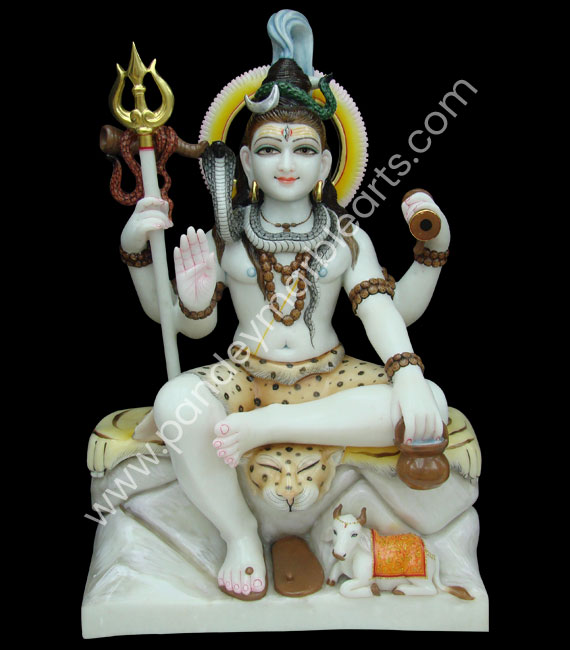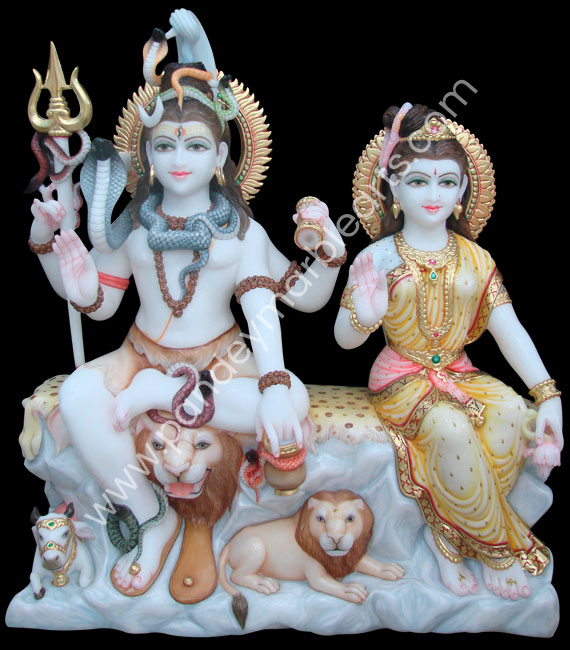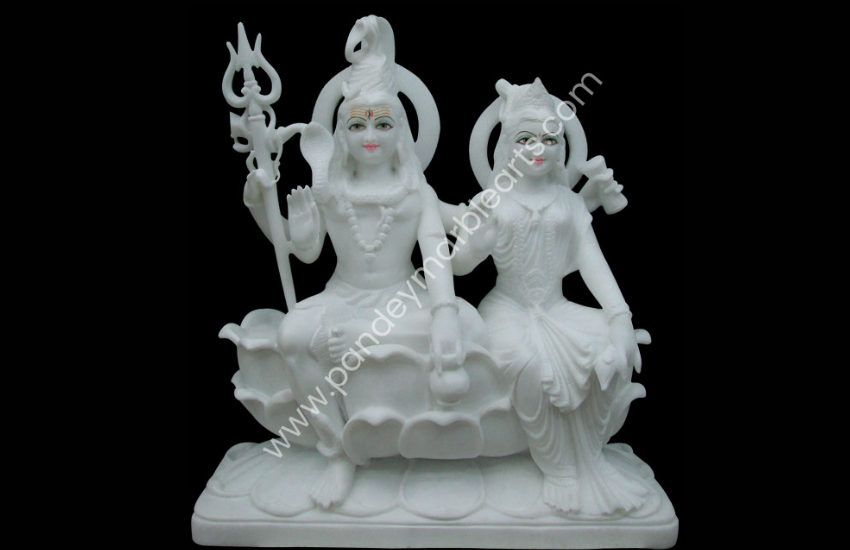In Hinduism, Lord Shiva is considered one of the supreme deities, also referred to as the Destroyer and the Transformer. He completes the holy trinity of Hindu deities with Brahma, the Creator, and Vishnu, the Preserver. Since our childhood, we have seen Lord Shiva statues everywhere, from temples to our homes and even schools. But have you ever thought about what the Lord Shiva statue actually symbolizes?
The statue of Shiva is a symbolic form inspired by ancient texts, stories, and beliefs. He is often seen in deep meditation, with a peaceful facial expression, long hair flowing off the top of his head, a snake on his neck, and a third eye on his forehead that symbolizes insight beyond ordinary sight. Each facet of his form conveys a part of his ethos, his power, his peace, and his ability to reach out to the divine.
In this blog, we will share what each aspect of Lord Shiva’s statue means and what they signifies for humanity.
What is the Significance of the Lord Shiva Statue for the Home?

1. Source of Peace and Positive Energy
It is said that having a Lord Shiva statue in the home will bring calm and positive energy. Lord Shiva constantly sits in a deep meditation or stillness, even when the spawning world is completely chaotic.
A peaceful and serene environment brought by Shiv sitting on the Kailash Parbat statue leads to a reduction in stress, and it should clear negative thoughts that create noise and promote a clearer mental picture.
2. Bringing Balance and Harmony into the Home
For many, Lord Shiva represents destruction and creation, balanced moments of peace with the order in chaos. The moment the statue is a part of the home, it is as if that balance has entered the home.
Lord Shiva can bring balance during life’s ups and downs to bring a sense of stability. Families also tend to feel more connected and grounded, emotionally balanced, when experiencing Shiva’s energy within that space. His teachings help us learn to be strong but calm, especially when life has taken a rough turn.
3. A Reminder of Inner Strength and Letting Go
Shiva represents transformation. The statue encourages us to let go of whatever else holds us back, the old habits, fears, or thoughts that are holding us back. As Shiva destroys those things that we do not need in the universe, he teaches us to let go of those things that do not serve us in our lives.
And, he inspires us, directs us, and mentors us, quietly supporting us to grow, be strong, and to remind us to see the light that clearly will take us on our journey.
4. Spiritual Connection and Daily Mindfulness
For those who are accustomed to meditating or any other practice of spirituality, the Shiva statue stands out as a point of focus in a meditation. The way he sits, still with his eyes shut, provides a visual point of view to go inward and will encourage you to do that regularly, and in this way, encourage a period of preparation and reflection for your day.
Meditating regularly will once again help you be more mindful, aware, and spiritually connected throughout your life through regular engagement of daily actions and not just in a business way through rituals.
Different Types of Lord Shiva Idols and Their Significance
Lord Shiva is worshipped in so many forms, and each type of idol has its own special meaning according to the way it is designed, its pose, and its symbols. Each idol illustrates different aspects of Shiva’s divine powers and qualities.
1. Shiva in Meditation – (Dhyan Mudra)
This form of Shiva is one of the most popular. In this idol, Shiva is in a sitting cross-legged position, eyes closed and deep in meditation on a Kailash Parbat. This sitting marble Shiva statue represents peace, concentration, and spiritual strength. It is great for homes where meditation, yoga, and spiritual practices take place, as it creates a peaceful and balanced energy.
2. Nataraja – (The Cosmic Dancer)
In this form, Lord Shiva is dancing inside a ring of fire. This represents the rhythm of the universe and the cycle of creation, preservation, and destruction. This statue shows Lord Shiva in a standing pose, but on one leg, specifically his right leg, which is on the demon Apasmara (also known as Muyalaka).
The idol is filled with energy and believed to help remove ignorance and ego. This idol is kept in cultural spaces, studios, and homes of others that involve art, or professional spaces where creativity and expression are present.

3. Ardhanarishvara – (Shiva and Parvati as One)
In this form, Shiva is represented with his wife Parvati as one body, as one side is male, and the other side is female. This form represents the balance between the masculine and female energies, and both require equality. This is basically a representation of harmony and unity.
4. Shiva Lingam
A Shiva Lingam is a simple, pillar-like sculpture frequently found in temples. It represents endless energy or force as well as the formlessness of Shiva. Some people believe it brings strength, growth, inspiration, and a spiritual awakening. During the Shivratri and Shravan month, devotees perform various rituals involving the Shivling, which include offering it holy water (especially from the Ganges), milk, and Panchamrit (a mixture of milk, curd, ghee, honey, and sugar).
5. Panchamukha Shiva (Five-Faced Form)
This idol depicts Shiva with five faces, each facing a different direction (one in the front, one in the back, one on each side, and one on the top). Each face represents a different element and a different nature of Lord Shiva: creation, protection, destruction, granting blessings, and one’s hidden self. Each of the five faces is supposed to aid a person when they need protection from different angles and deepen their spiritual awareness.
6. Shiva with Family (Shiva Parivar )
In this idol, Shiva is depicted with Goddess Parvati, Lord Ganesha, and Lord Kartikeya together. The Gaurishankar statue has a representation of love, togetherness, and harmony of the family. Many families keep this idol at home to assist in peace and bonds among family members. It is believed that buying the Shiv parivar idol on Shivratri strengthens family bonds, fosters love and cooperation, and invites divine blessings.
Which Material is Good for a Lord Shiva Statue?
Marble is considered the purest and most pious material for making god idols. It is pure, fresh, and tranquil as the Lord Shiva himself. A marble statue will help improve one’s spiritual connection and reverie while praying or meditating.
With its radiant marble finish, each Shiva mudra statue, whether Abhaya, Dhyan, Anjali, Nataraja, or Rudra, stands out in breathtaking detail, capturing the divine energy.
If you are looking for a white Lord Shiva statue, then Makrana marble is considered the best. It is found in the state of Rajasthan, and is generally of high quality and a very smooth finish.
If you’re looking for a black Shiva idol, Banswara marble would be a good material for that. It is strong, deep in color, and gives the idol a bold and powerful look, while still holding the same spiritual purity.
However, be careful when buying Shiva moorti made of marble dust, fiber, or synthetic materials. These may look attractive, but they often lack spiritual value and may not hold positive energy the same way natural stone does.
Conclusion
The Lord Shiva statue symbolizes spirituality, strength, and peace. To experience calm and positive energy and benefit from this divine energy, it is important to place the Shiva murti in the correct direction. The statue should be placed facing north or east on a clean, quiet space, preferably in a pooja room or meditation area, and at about ground level.
If you are looking for hand-carved, spiritually powerful god idols, trust Pandey Moorti Bhandar, renowned for crafting pure marble statues in Jaipur that hold true meaning, devotion, and timeless beauty in every detail.

